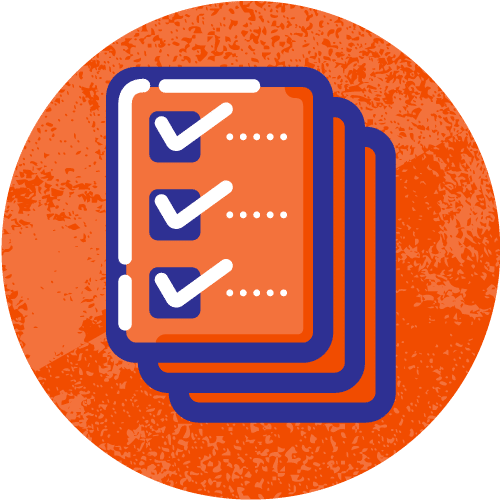Your team is busy. Requests are flying in, deadlines are shifting, and everyone’s juggling competing priorities.
In the middle of it all, someone’s about to start on a new task, project, or client request. But before they dive in, there’s one question they should always ask:
“Do I have the Values, Goals, and Resources I need to do this well?”
My Values, Goals, and Resources (VGR) framework is how I help agency leaders make their teams more self-sufficient. Once people know to pause for VGR, they start taking ownership—either moving ahead confidently or raising their hand early if they’re missing something.
Sometimes you’ll supply the missing piece. Other times, someone else on the team will. Either way, you’re no longer the bottleneck for every decision, and your team builds the muscle to handle more on their own. That’s how you move from being involved in everything… to overseeing a team that can get things done without you hovering.
What VGR is and why it works
VGR is a quick, three-part readiness check:
- Values: Does this align with how we do things?
- Goals: Do we know the desired outcome?
- Resources: Do we have what’s needed to deliver?
When the team runs this check before starting work—whether it’s a small client deliverable or a major agency-wide initiative—they avoid costly missteps.
It’s not about slowing things down. In fact, it speeds things up because you don’t get halfway through a project only to discover the client wanted something completely different, or that you’re missing key inputs.
Agencies that consistently use VGR waste less time, deliver higher quality work, and become more attractive to future buyers because they have a disciplined, reliable way of operating.
Values
Values are the standards and preferences that shape how your agency works. They aren’t always moral or heroic. Often, they’re practical guidelines that keep things running smoothly.
Examples:
- “We only take clients who collaborate weekly.”
- “We follow AP style in all copy.”
- “We don’t respond to client texts outside work hours, unless it’s urgent”
When your team knows your values, they can spot misalignments early.
Scenario: A designer sees that a new client’s brand guidelines require fonts you know will cause accessibility issues. Instead of plowing ahead, they pause to confirm whether the project should adapt to meet your accessibility standards. That quick check prevents wasted hours and keeps you aligned with your values.
Leader role: Share your values often—in onboarding, all-hands meetings, and team resources. They need to be specific and actionable so people can apply them without guessing.
When values are clear, you can trust your team to make alignment calls without coming to you every time.
Goals
Goals define the intended outcome. Without clear goals, your team may deliver the wrong thing—or spend too much time over-delivering.
For each piece of work, they should know:
- The ideal outcome—the best-case scenario.
- The minimum acceptable outcome—the baseline that still counts as success.
This isn’t just a nice-to-have. Without these two reference points, people either aim too low and miss expectations, or aim too high and waste resources chasing perfection when “good enough” was the goal.
Scenario: An account manager is preparing a client presentation. The ideal outcome is to wow the client with insights and set the stage for an upsell next quarter. The minimum acceptable outcome is to provide accurate reporting and confirm continued satisfaction. Knowing both, they can balance polish with efficiency—and choose the right level of effort.
Leader role: Document your goals and make them accessible. When people can check what success looks like before they start, they’re more likely to hit the target without constant back-and-forth.
Resources
Resources are all the inputs needed to execute successfully:
- Budget
- Time
- Staff bandwidth
- Information and data
- Tools and technology
- Access and approvals
Even when values and goals are clear, missing resources can sink a project. Resources are especially risky when you hire a new team member—they’re likely competent at their work, but they don’t automatically know the resources to consider.
Scenario: A developer sees a client request come in for an integration that requires API access they don’t yet have. Instead of starting and hoping for the best, they flag the issue right away. That early heads-up allows the account manager to get the credentials before the work is due—avoiding a last-minute scramble.
Leader role: Encourage your team to speak up early if they’re missing resources. Make it safe for them to raise gaps without feeling like they’ve failed. The earlier a resource issue is flagged, the easier it is to fix.
Building a VGR habit on your team
To make VGR part of your culture, you need to do more than explain it once. Here’s how to embed it:
- Teach it in onboarding. Give every new hire a simple explanation and examples of VGR in action.
- Model it yourself. Use VGR language when you delegate: “Here are the values and goals; let me know if you’re missing resources.”
- Praise the pause. When someone catches a missing VGR element before starting, recognize them publicly. This reinforces the behavior.
- Make it part of everyday language. Encourage shorthand like, “I’ve got values and goals, but I’m not clear on the resources,” so it’s quick to communicate readiness.
- Review in retrospectives. When something goes wrong, check which VGR element was missing and how to prevent that next time.
Over time, your team will naturally run the VGR check before starting anything significant. They’ll move faster, make fewer mistakes, and involve you less in the details.
Common pitfalls
Even with VGR, leaders and teams can slip up:
- Assuming values, goals, or resources are clear without confirming.
- Not sharing values or goals in enough detail for others to apply them.
- Skipping the resource check until it’s too late to fix the gap.
- Using VGR only for big projects instead of everyday work.
The good news? These pitfalls disappear quickly once VGR becomes a habit.
The payoff to using VGR
When your team uses VGR, they don’t just execute better—they become more self-sufficient. They know when they have what they need, and they speak up early when they don’t.
For you, that means less firefighting, more confident delegation, and more time to focus on the bigger picture. For your clients, it means smoother projects, fewer surprises, and better results.
And if you’re ever planning to sell your agency, this kind of operational discipline makes you far more attractive to buyers. Self-sufficient teams are valuable teams.
Next step: Teach the VGR framework to your team this week. Ask them to pause before starting anything significant and confirm they have the values, goals, and resources. If something’s missing, they should raise it right away—to you or their direct manager.
The sooner your team starts using VGR, the sooner you can step back from the day-to-day… and trust that things will still get done, and done well.
Question: What’s your next step in using Values, Goals, and Resources (VGR) at your agency?


